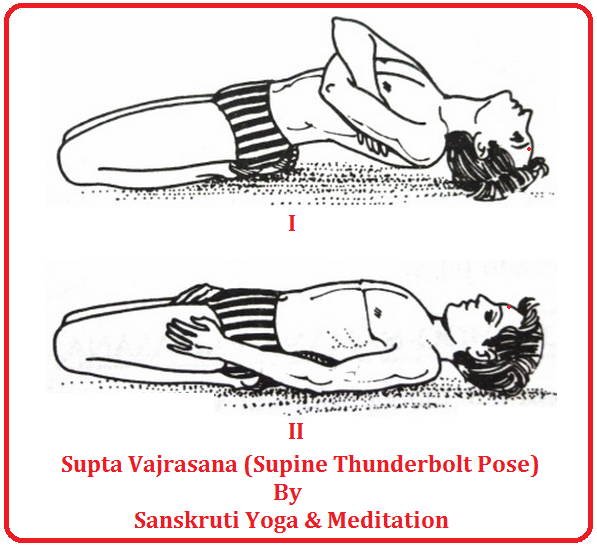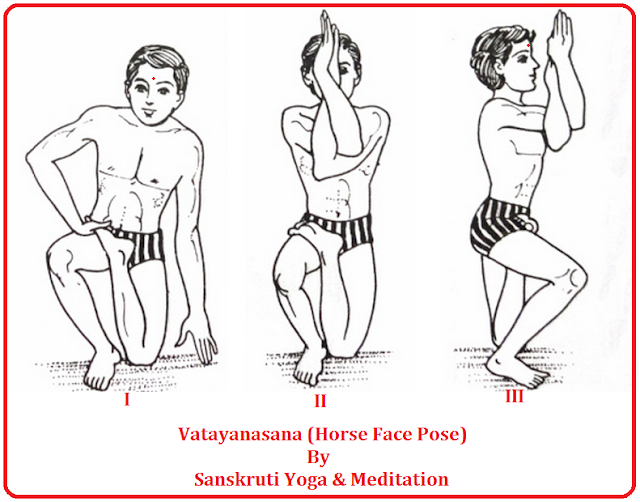‘vrusha’
means a bull. An aspirant performs this asana resembles the image of manliness.
He is believed to be a ‘man-bull’ and so this asana is called vrushasana.
Physical flaccidity in a young body is a sign of old age. It indicates physical
weakness. This asana helps to preserve youth.
Procedure for Vrushasana (Bull
Pose):
- Bend the right leg at the knee and place the heel under the anus.
- Place the left knee on the right knee in such a way that the left heel touches the right thigh.
- Sit erect and place the palm of the right hand on the knee.
- Then place the palm of the left hand on it.
- Breathe in the normal way.
- Direct your sight and attention to the navel.
Advantages of Vrushasana (Bull
Pose):
- It stimulates blood-circulation making the body energetic and the mind peaceful.
- It makes the respiratory system function in a proper order.
- It cures diseases such as waste of semen, gas-trouble, nocturnal discharges, indigestion, lumbago, insomnia, cardiac trouble, asthma and dysentery.
- It awakens Kundalini Shakti which enters the mouth of the Sushumna.
- It strengthens all the muscles of the body.
Therapeutics:
- Respiratory Disorder
- Digestive disorder
- Gas-trouble
- Insomnia
- Asthma
- Dysentery
- Cardiac trouble
- Rheumatism
- Joint Pain
- Spinal Disorders
- Constipation
- Backache
- Weight Loss










